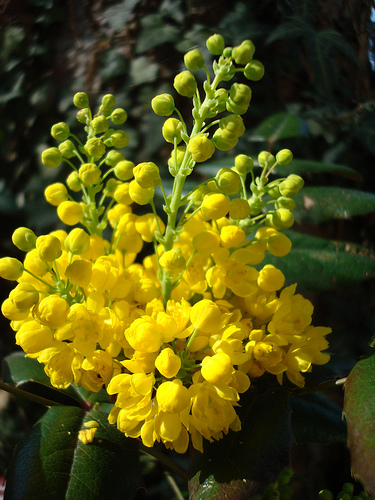Interactions
Mahonia aquifolium is a primary
producer and would be at the top of the food web since it
provides food to other organisms by the production of fruit.
Humans do use the Oregon Grape for medicinal purposes, such as
the treatment for wounds, to help respiratory problems when
mixed in a tonic, and to treat skin disorders, including
psoriasis and fungal infections. Berberine is a compound that is
isolated from the Oregon Grape, which is an isoquinoline
alkaloid that has antibiotic, antitumor, and antidiarrheal
properties. Other active ingredients that are derived from M.
aquifolium include berbamine and oxyacanthine.
In the ecosystems that M. aquifolium is found in, there are other primary producers, such as: alfalfa, sunflower, peppermint plant, and the English Holly. Some organisms that would help in the dispersal of seeds by ingesting the fruit created by the Oregon Grape would include species like the Wood Duck, Mallard, and Ruffed Grouse. In order to keep the ecosystem balanced there are predators to consume the animals that ingest the primary producers, and some of the animals involved would be the cougar and the gray wolf. The deer tick is a parasite that could easily be found on any warm-blooded mammals in the ecosystem while the hat thrower fungus helps in the breakdown of fecal matter that would be produced by animals. All of the organisms in this paragraph are intertwined and are found in the ecosystems in which the Oregon Grape is found.